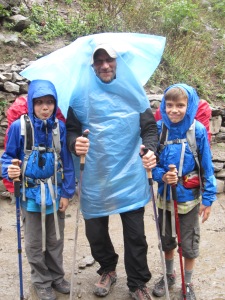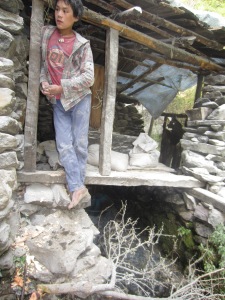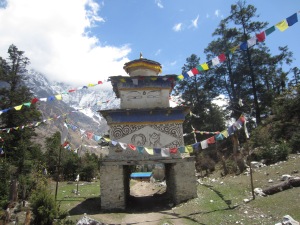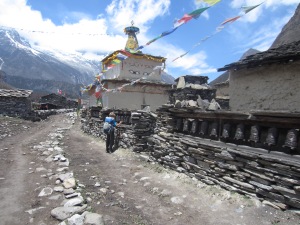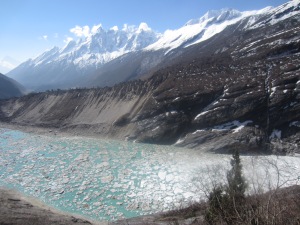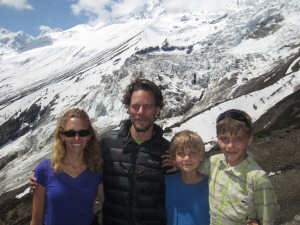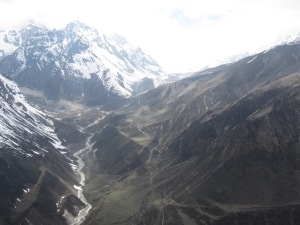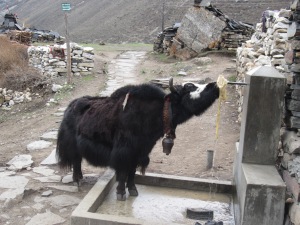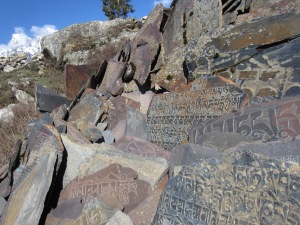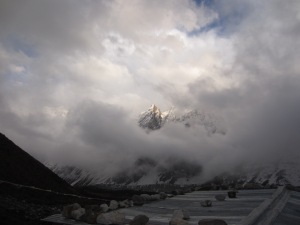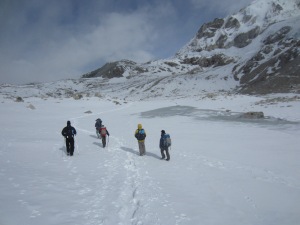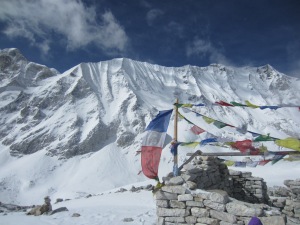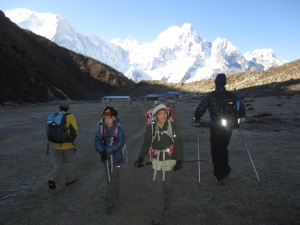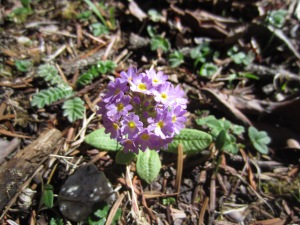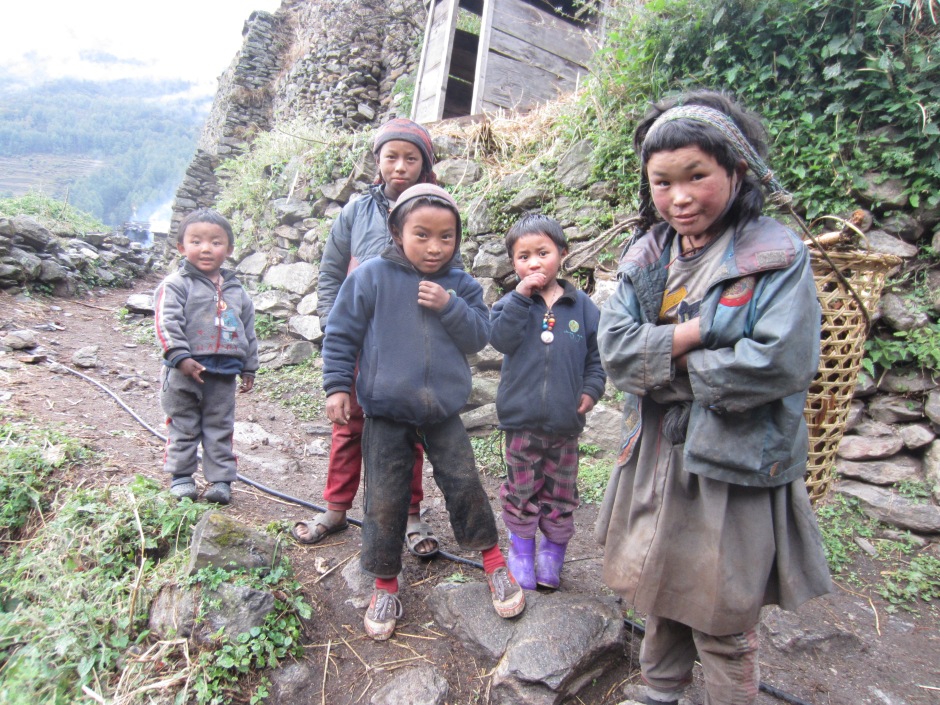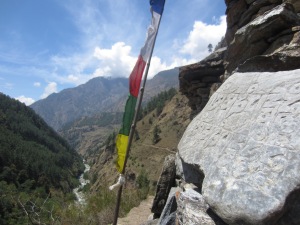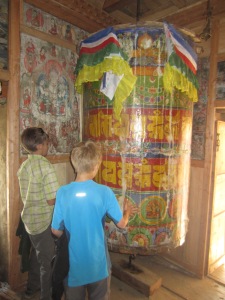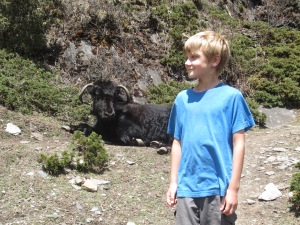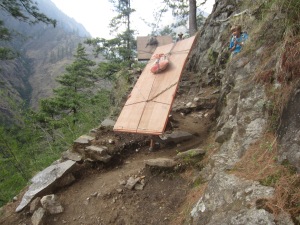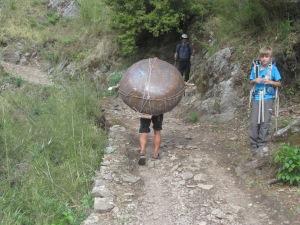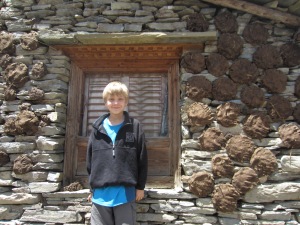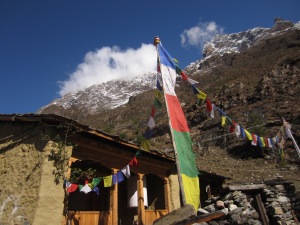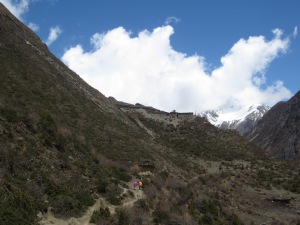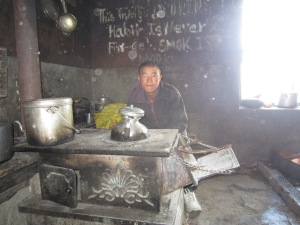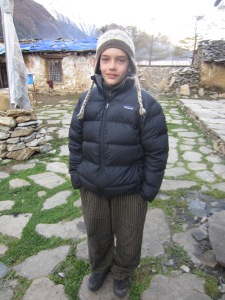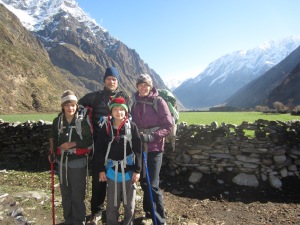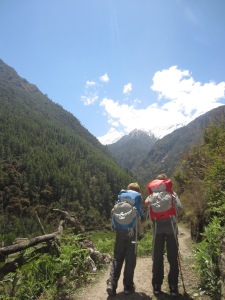We left Kathmandu after two months in Nepal via Qatar Airways and the requisite layover in Doha, Qatar. Landing at midnight in that hot, dry, modern, wealthy, sterile capital city for a 14 hour stay at the Doha Sheraton and Convention Center provided a bizarre interlude between our four months in Asia and our final three weeks in Europe. We pushed the reset button while enjoying crisp, clean sheets and a bathtub overlooking the Persian Gulf. The boys found Doha unusual, especially the modern architecture, but – as we were whisked back to the airport in our BMW sedan — lamented that we weren’t able to spend a little more time enjoying the luxury hotel facilities!

Descending to land south of Rome on a clear, blue, spring day toward a runway surrounded by green fields and rolling hills exuding “Italian countryside”, we knew we’d left Asia and arrived on the final leg of our trip. The sounds, the faces, the vehicles and infrastructure, the driving style, the food were all so distinctly non-Asian, but the most pronounced difference was the air quality. For the first time on the trip (other than our rural trekking experiences) we felt like we could take a deep breath and it would be more likely to lengthen than to shorten our lives. Clean air. Don’t take it for granted.
Rome surprised with ancient objects around every corner: THE Pantheon, THE Colosseum, THE Forum, the mortal remains of THE Saint Paul, etc. We spent several days roaming the city, gazing on the remnants of past glories, seeking out delectable pastries, meaty, cheesy sandwiches, strong coffee and cheap wine, and shopping for “affordable” clothing for our urban European travels. (Mud spattered trekking pants and smoky, dusty down jackets are not currently in style in Rome.) The inside knowledge of our consumate guide Andrew added to our appreciation of this city, and free lodging at his apartment kept our budget in check. (Thanks Andrew and Maryann!) In Rome we met up with many of the Annapolis Santins (Amy’s family) to explore the city, enjoy wine-soaked meals, and to celebrate a milestone birthday with Amy’s mom, Joan.
Our six days in Florence were spent moving from one stunning Renaissance art object to the next as we tried to make sense of the Medici family tree and brushed up on our bible stories (the subject matter of much of the painting of that era). We wandered through piazza after piazza, from one palazzo to the next, from museo to galleria to ponte to giardino, always with our eyes out for the world’s best gelato (successful) and the perfect Florentine leather jackets (not successful). Crossing the River Arno on the Ponte Vecchio (“vecchio” because it was the only bridge not destroyed by the Germans during their WWII retreat) we climbed to the Piazzale Michelangelo (site, the day before, of the Giro d’Italia stage 9 finish line) to gaze back over the city with Brunelleschi’s dome of the Basilica di Santa Maria del Fiore (or the Duomo) a prominent presence on the skyline. Family favorites included some predictable ones — Botticelli’s paintings in the Uffizi and Michelangelo’s David — and some less predictable, such as the frescoes by Giotto in the chapels of the Basilica di Santa Croce. (Also, there are a lot of famous dead people in Florence. Santa Croce alone houses the remains of Michelangelo, Machiavelli and Galileo.)

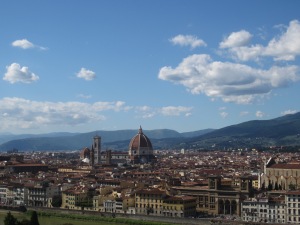



Longing for some exercise (other than walking the streets eating gelato and cheese), we hopped a train to the walled city of Viterbo and took a bus onward to the medieval hilltop town of Montefiascone for a day hike along the via Francigena. This ancient pilgrimage route from France to Rome runs along the via Cassi established by one Cassius or another in the last centuries BC, and some sections of the Roman road are still intact. The weather held and we wrapped our last full day in Italy with a late-night, local train ride back to Rome.



A quick two days in Paris was not enough to scratch the surface of the City of Lights, but we did manage a walk that took us to the Ile de la Cite, birthplace of Paris and home to the Notre-Dame Cathedral. The boys, having had enough of European churches, took greater delight in a two-person, bouncy ride in the playground next to the cathedral than in the flying buttresses of the Gothic apse. A stroll along the left bank of the Seine took us to the fabulous Musee d’Orsay housing a great collection of impressionist works, including many a Monet, Cezanne, Degas, Pissaro, Sisley and Renoir. As always, the audio tour was worth the price, and we left knowing more about painting in 1870s France than we ever thought we’d care to know. The Paris highlight was dinner in Versailles with the Froidvaux family. Amy and her four siblings had hosted the four Froidvaux children (and vice versa) in the 1970s and 1980s. This boisterous reunion was the first in nearly 30 years (made possible by Facebook). As in Rome, the budget remained more or less intact thanks to the generosity of a friend. (Thanks, Kate, for the great apartment!)


An early morning cab ride to Charles de Gaulle and we were off on our final leg of the journey: to Iceland. Why the not so obvious Iceland? Simple. Iceland Air had the cheapest fares from Europe to the US when we were looking for our return tickets and offered free layovers for up to seven days. And what better place to put the final exclamation point on our world tour? Iceland didn’t disappoint.
What to say about this strange place of only 320,000 hardy souls? Hovering just south of the Arctic Circle, Iceland is very far north. So, this time of year it is light out nearly 24 hours per day making it difficult to sleep even on the world’s most comfortable beds (which Iceland has). Two-thirds of Icelanders live in the capital city of Reykjavik, so most of Iceland is rural with only sparse human habitation. Trolls, which were commonplace at the time of European settlement in the 9th Century AD, are now endangered and possibly even extinct.


Iceland is essentially a volcano rising out of the North Atlantic, but it is a volcano covered with ice. (Actually it is a lot of volcanoes covered with ice. Each aircraft in the Iceland Air fleet is named after a different Icelandic volcano.) This is a strange combination which leads to beautiful, stark scenery and serious natural disasters. When a volcano erupts under a glacier, the ice melts. The unstoppable torrents of water and ash, known as jokulhlaups, running off toward the sea are what cause most of the destruction in these events, wiping out bridges and roads and turning vast expanses of farmland into mud flats.
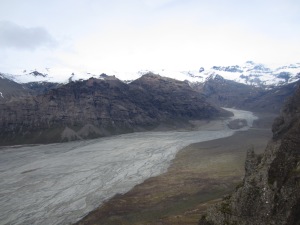
We managed to avoid the jokulhlaups and to enjoy the scenic beauty as we cruised the southern part of the island in our rented car. Mostly overcast, we didn’t see the tops of many of the volcanoes, but were able to imagine them looming behind the clouds. We also had to imagine the bulk of massive Vatnajokull, Europe’s largest glacier, and be satisfied with seeing just the fingers of this monster (each with its own unpronounceable Icelandic name) as they crept down from the mountain valleys to calve into melt water lagoons. At the head of Breidamerkurjokull, the blue water of Jokulsarlon (Glacier Lagoon) — which has made cameo appearances in two James Bond films, Tomb Raider, and Batman Begins — clashed with the grey sea churning in through a tight channel at high tide. Gazing down from a 1000 meter high promontory onto the scarred and pitted surface of another finger, Skaftafellsjokull, it was difficult to appreciate the scale of even this small portion of the ice sheet. But the periodic booming crashes of ice falling off Morsarjokull as it reached its final precipice were a reminder of the size and power of these slowly diminishing natural phenomena.







Returning to civilization via the best bowl of lobster soup ever tasted by humankind, we rolled into Reykjavik for our final night of the trip. With so much to choose from in Reykjavik and so little time, we opted to visit the Icelandic Phallological Museum. (Yes, it is what it sounds like it is, and, yes, Amy decided to skip this one.)
The next day, our last day in Europe, was spent soaking in the geothermal sulfur hot springs of the Blue Lagoon outside Grindavik. Steam baths, saunas, silica mud facials, a huge steaming natural hot spring, and a cold beer (or blue “raspberry” slushy depending on age) were a great way to unwind before jumping our flight back into the eastern time zone of the United States.








